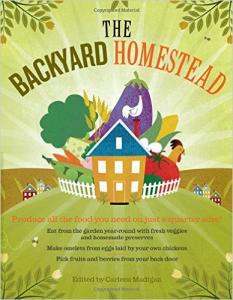What do you depend upon? We all depend on things, and most (if not all of them, really) are outside of our full control.
With that in mind, it is wise to diversify and even multiply your dependencies. When I say multiply, I mean make them redundant so that when one lets you down, you can lean more heavily upon another. A place to start is by strengthening the things that are closer to home–things like skilled labor, and if you can get some, the land itself.
I think every home should have a garden. There’s the ritual of it, for one thing. It serves as a reminder that, no matter where you live–even when it is a high-rise in Manhattan–you depend on the soil for your sustenance. Even a tiny container garden by the window is worth the effort if it reminds you that you depend on the fruits of the earth, from somewhere.
But most of us don’t live in high-rise apartments. And most of us can do more than ritually keep a container garden, even if all we have is a small suburban lot.
But what if you could build a house, or just renovate one, with growing more of your own food in mind?
The first consideration is location.
I’m not talking about what your Realtor probably means when she repeats the mantra, Location! Location! Location!
Usually what she has in mind is an “exclusive” neighborhood of overpriced Mac-mansions where the schools are “good” and resale is quick and “profitable”. What I’m thinking about is southern exposure. (Northern exposure if you’re living in the Southern Hemisphere.)
If you’re really committed to making the home you build productive, the economic forces that make neighborhoods exclusive or schools good may actually work against you. What you really need is some sunny ground and a reliable supply of good water on the cheap. And the best places for those may not be in neighborhoods that are considered good by the metrics employed by Realtors.
The parcel itself doesn’t need to be very large. Even a 1/4 acre can yield more food than you’ll know what to do with if you lay it out well. (I’ve actually got a book on the shelf entitled, The Backyard Homestead: Produce all the food you need on just a quarter of an acre!)
 What you need to think about here is trees (or the absence of them) and the location of the house on the lot. In other words, you need as much sunny open space as you can get.
What you need to think about here is trees (or the absence of them) and the location of the house on the lot. In other words, you need as much sunny open space as you can get.
If you’re on the south side of the street you should push the house as close to the street as you can. (This is conducive to neighborliness, which is another thing you should work at since it is another thing you will probably need if distant institutions continue to get even more distant and unresponsive to our daily needs.) If you’re on the north side of the street, you’ll need to push your house toward the back of the lot. There are some benefits to this, too. A well tended vegetable garden can be a beautiful thing, and if you grow more than you need, you can even set up a little garden stand. Making the garden visible will actually encourage your neighbors to begin their own gardens, thereby creating the best possible “keeping up with the Jones’s” dynamic that you could hope for. You’ll also be able to get large equipment in and off the property more easily if it is a narrow lot.
I think the big problem with the lot on the north side of the street is the wrong sort of exposure. You want to be open to the sun, but you may not want to be quite that open to people. This is where well placed fencing and especially small, well-located outbuildings can help. Those can help to create an outdoor room–open to the air and sun, but not entirely open to prying eyes. And if you’re serious about this, you will need outbuildings anyway.
What outbuildings? I’ll talk about a few in my next post.
—
If you’d like to know more about my latest book before shelling out your hard-earned money for it, Wipf and Stock, the publisher of my book, Man of the House, has given me permission to share a little sample of the book with you. The hope, of course, is you will like it enough to purchase a copy. Enjoy!.
Click here to download the book excerpt as a PDF: Man of the House_Excerpt













